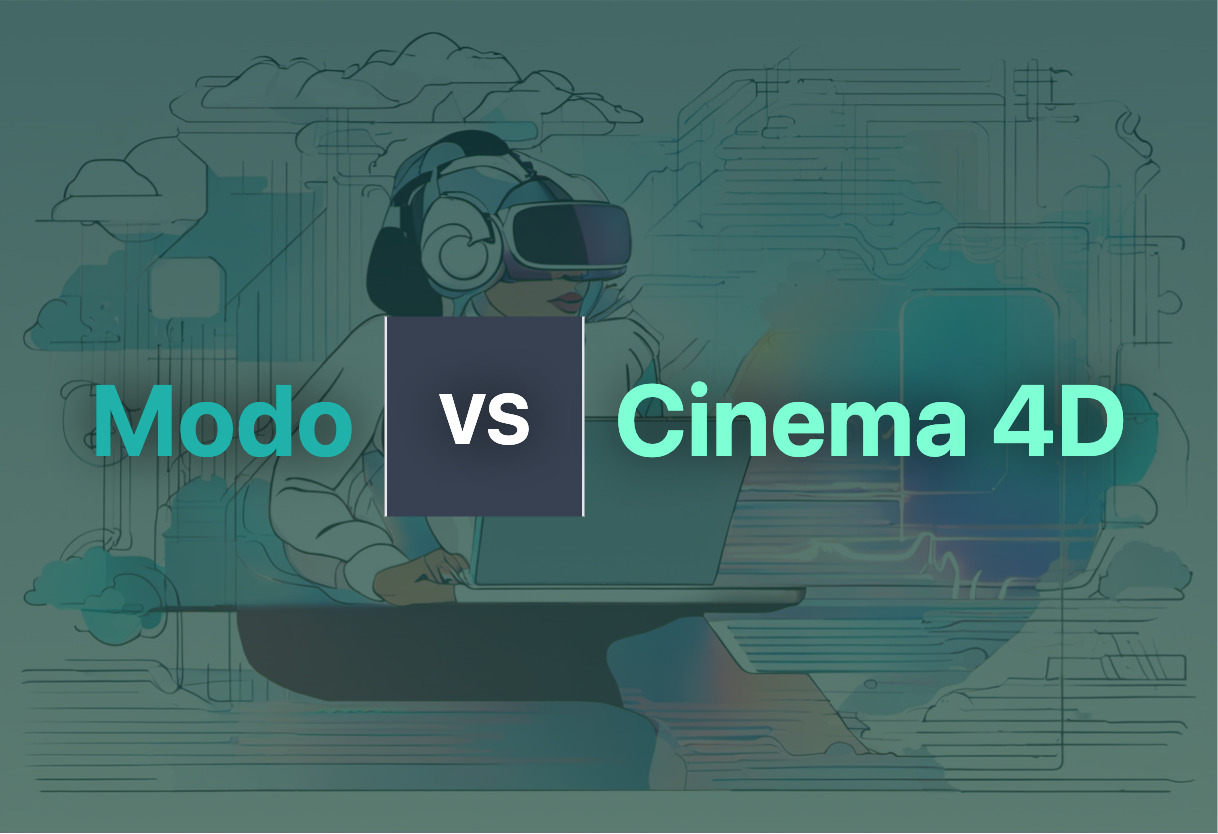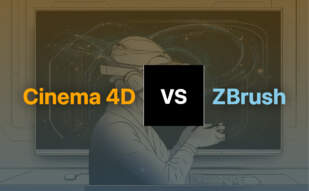Choosing between Modo and Cinema 4D hinges on personal preference and project requirements. Modo is ideal, particularly for modelers and concept artists seeking advanced sculpting tools, while Cinema 4D excels in motion graphics and comes with a unified simulation system for dynamic effects.

Key Differences Between Modo and Cinema 4D
- Use: Modo caters to modelers and concept artists, while Cinema 4D is adept for motion graphics.
- Customization: Modo supports considerable customization with tools, scripts, and gestures, compared to Cinema 4D’s scene nodes.
- Sculpting Tools: Modo prides in advanced sculpting tools. Conversely, Cinema 4D offers tools like ZRemesher for generating simplified geometry.
- Pricing: Modo utilizes a subscription and upgrade-based model, while Cinema 4D offers monthly, yearly, or perpetual licenses.
- Animation: Modo allows for the animation of attributes or channels. On the other hand, Cinema 4D has a comprehensive set of animation tools.
| Comparison | Modo | Cinema 4D |
|---|---|---|
| Type | 3D modeling, animation, texturing, rendering software | 3D modeling software, excels in motion graphics |
| Operating System Compatibility | Windows, Linux, macOS | Windows, macOS |
| Key Features | n-gons, edge weighting, PandD decals, Triplanar Texturing, Ruler/Grid MeshOp, Planar and Seam Decals, Intel Denoiser, pace, Workplane | Polygonal modeling, volume modeling, material system, bodyPaint 3D, Hierarchical list, poly pen, node-based materials |
| Customization | Allows creation of custom tools, gestures, scripts, workflow customization features | Tags for object properties, objects generated via scene node editor |
| Animation Tools | Wrap Effector for deformations, editable rigs, animatable attributes or channels | Ability to animate any object, material, or parameter, keyframing done manually or parametrically |
| Rendering | Intel Denoiser provides smarter rendering, native rendering engine provides high-quality output in less time, render farm support | Redshift in CPU mode for all users, enables quick iteration |
| Pricing | Subscription and upgrade-based | $94/month or $719/year, perpetual license $3,495, educational access $9.99/6 months |
| Educational Resources | Extensive resources and tutorials provided for users | Active community for support and knowledge sharing, educational resources available |
What Is Modo and Who’s It For?
Modo is an advanced 3D modeling, animation, texturing, and rendering software pioneered by Luxology LLC, which has now merged with Foundry. Immaculately tailored for engineers, designers, and creators, it allows customization of tools and scripts, rapid iteration, procedural modeling, and asset creation in a singular, user-friendly environment.
Modo’s balls in the court of primarily the footwear design and mobile gaming industry. It offers native 3dm Rhino 7 support, efficient animation exporting for game engines and, more so, precise mesh editing and advanced sculpting tools for a smooth creative journey.

Pros of Modo
- Multifaceted capabilities: modeling, animation, texturing and rendering.
- Promotes rapid procedure modeling and asset creation.
- Extensive support for plugins, inclusions of different software.
- Efficient workflow customization features, superior native 3D support.
Cons of Modo
- Pricing model is subscription and upgrade-based.
- A steep learning curve for beginners.
What Is Cinema 4D and Who’s It For?
Cinema 4D is an elite 3D modeling software boasting high proficiency in motion graphics, polygonal modeling, animation basics, photorealistic material creation and a whole lot more. Its user base usually includes motion graphic artists, visual effect developers, 3D animators, and game developers.
With hierarchical lists for object management and a scene node editor to boot, users can create detailed animations, characters, and creatures. Its latest releases, S26 and 2023, boast notable strides forward in tool efficiency and tech integration including ZRemesher and Redshift 3D.

Pros of Cinema 4D
- Wide array of tools for object management, modeling, animation.
- Integration of third-party technologies like ZRemesher and Redshift 3D.
- Unified simulation system for dynamic effects.
- Large, active user community for support and knowledge-sharing.
Cons of Cinema 4D
- Expensive licensing model.
- Scene nodes are still an underdeveloped, emerging feature.
Modo or Cinema 4D: Which is Your Ideal Choice?
As we dissected Modo and Cinema 4D, their strengths and differentiators clearly emerged. But the ultimate choice hinges on your specific needs and audience.
For Footwear and Mobile Game Designers
Modo is your go-to. It’s king in rapid iteration, procedural modeling, and asset creation, critical facets for the footwear and mobile game design industries as seen with companies like New Balance and Wooga.
- Allows customization of experience
- Enables project management from concept to realization in one platform

For Modelers, Concept Artists, Industrial Visualizers
Again, Modo reigns supreme with its intuitive modeling tools, selection, and mesh editing options. Plus, it boasts excellent ratings and reviews, thanks to its advanced sculpting and animation tools.

For Motion Graphic Artists
Cinema 4D is your unequivocal choice. Its daily grind excels at motion graphics, offering a comprehensive toolkit for polygonal modeling, parametric objects, and sculpting.
- Pioneering hierarchical list for object management
- Node-based materials
- Capable of creating photorealistic materials, animations, characters

Choose Modo for its versatility in 3D modeling, animation, and texturing. However, if motion graphics are your north star, Cinema 4D offers advanced capabilities.
Logan Bellbrook
Content writer @ Aircada with a knack for nature & AR/VR/XR. Blogging the intersection of tech & terrain.





